Getting into cycling and looking to buy a bike, but unsure what type of bike is best for you and your budget? We can help!
This guide to the best women's bikes will break it all down. We'll explain the different types of bikes out there, what kind of riding they’re best suited to and what to expect for your budget. Finally, we have lots of advice to help you get riding and loving it.
What type of women's bike do I need in 2023?
There are three general types of bike: road bikes, mountain bikes and hybrid bikes, and within each category there is further variation, so you can get really specific about the right bike for you.
Road bikes

Road bikes are designed for speed and distance on the road. They have lightweight frames, slim tyres and a handlebar with a drop for a more aerodynamic position on the bike.
Some road bikes are designed with a focus on endurance and comfort, while others are built for speed, making them the ideal choice if you want to cover greater distances, explore the countryside or are planning to do a race or other on-road event.
Gravel and adventure bikes are becoming increasingly popular. They look like road bikes with their drop handlebars but are designed to be more rugged, and you can often fit luggage and mudguards to them, making them popular for touring, bikepacking and even commuting.
If a road bike is what you’re looking for, check out our list of the best road bikes we’ve tried and tested.
Mountain bikes
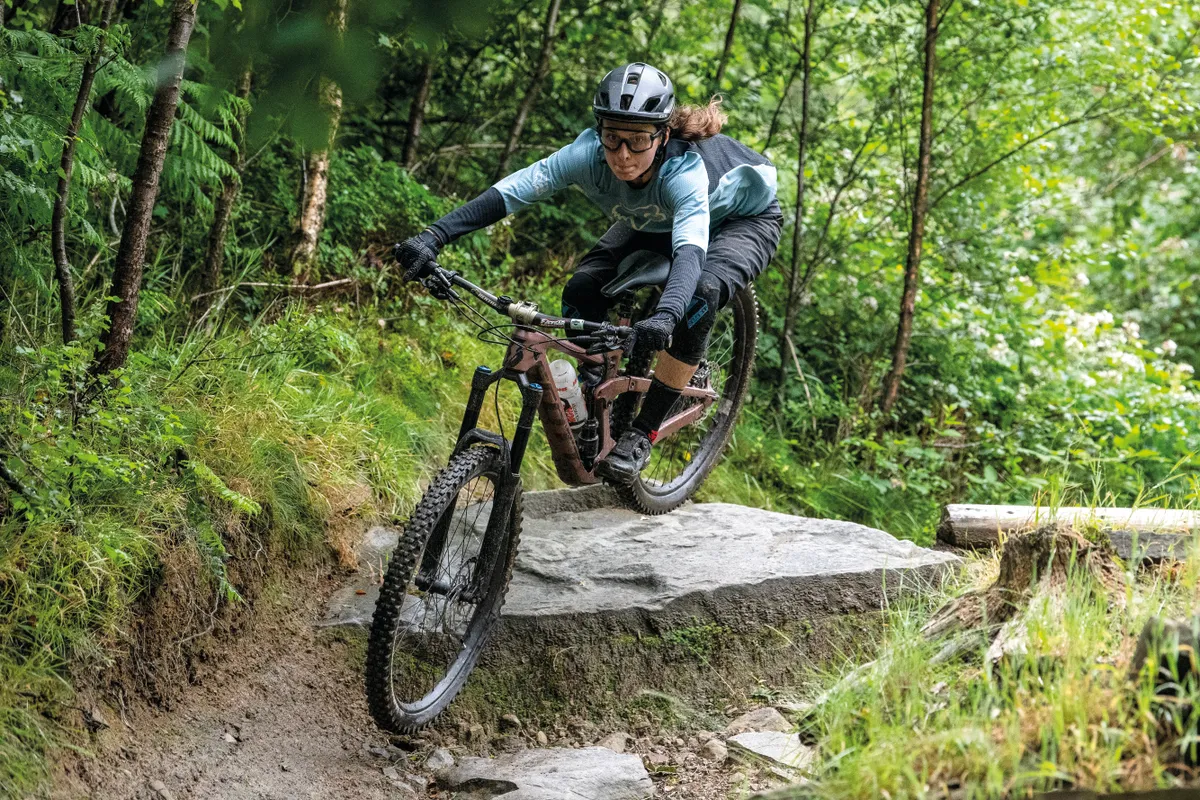
Mountain bikes are extremely versatile. They’re typically built for off-road use but can still be ridden on any road, they’ll just be slower going than a road bike.
They have flat handlebars and wider tyres, and usually have suspension on either the front only (hardtail) or on the front and rear (full-suspension), which helps smooth out rough terrain and provides traction for climbing, cornering and riding on muddy ground.
Mountain bikes are ideal for exploring your local woods, heading out on singletrack and going to a trail centre or bike park.
Our buyer's guide to the best mountain bikes has something for every budget to help you choose what’s right for you, and we’ve also rounded up the best women’s mountain bikes we've tested.
Hybrid bikes
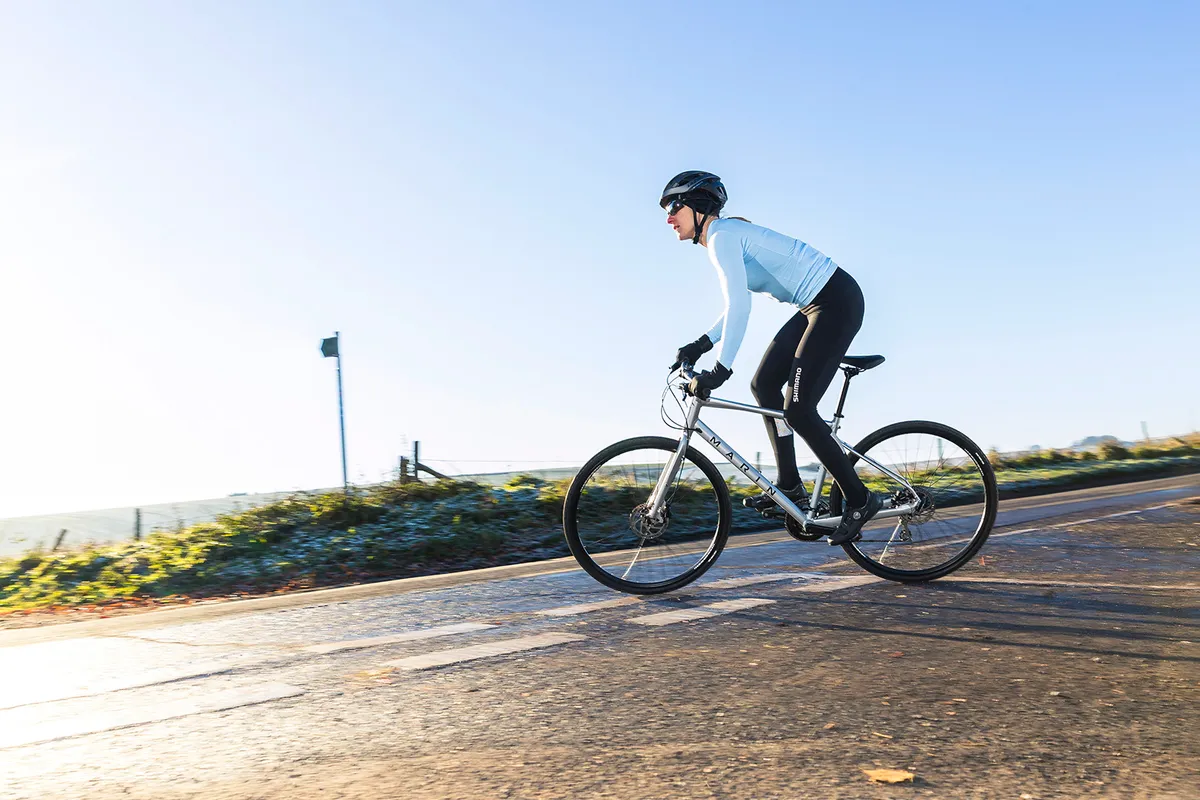
Hybrid bikes, also known as urban bikes, commuter bikes and city bikes, usually sit somewhere between road and mountain bikes in their design.
They typically have flat handlebars and an upright riding position, which make it easy to keep an eye on your surroundings and navigate when riding in traffic.
Hybrids can have a road-style frame that’s lightweight with a focus on speed and agility or a mountain bike-style frame that’s designed to handle rough roads, towpaths or fire roads, and some front suspension.
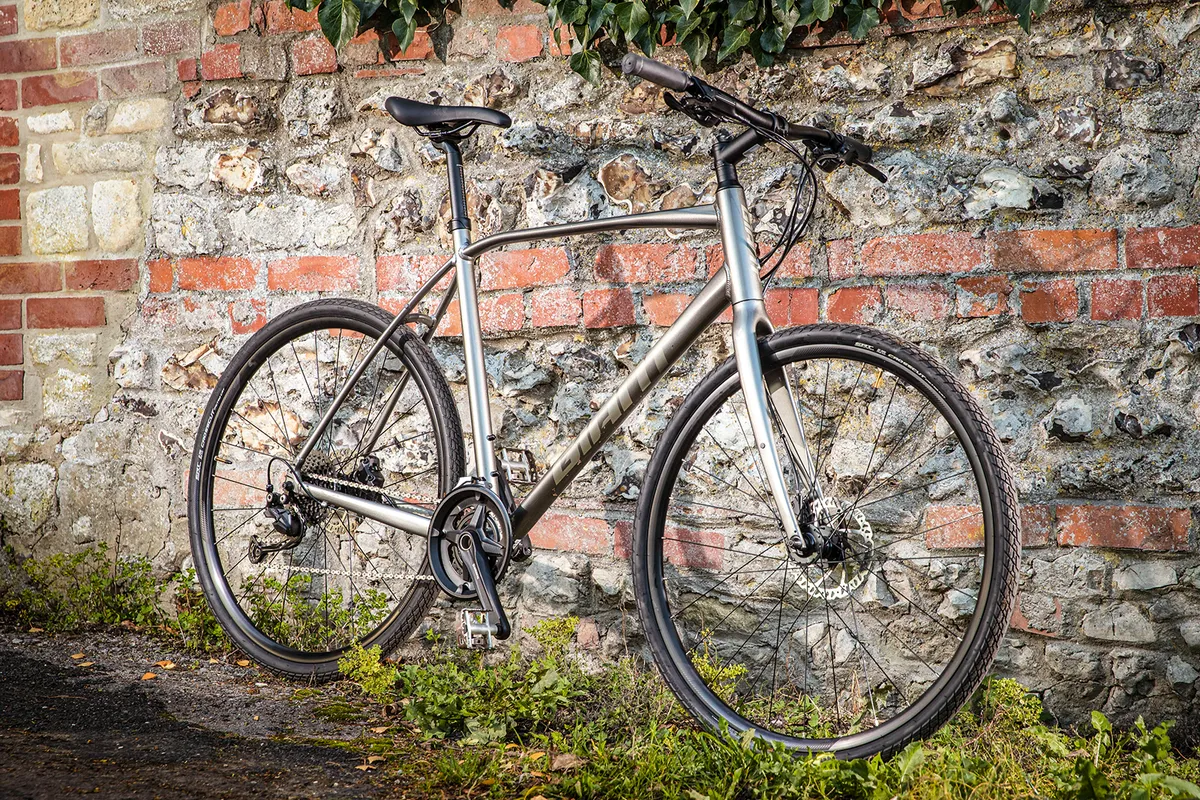
Hybrid bikes also have lugs for attaching mudguards (fenders), pannier racks and child seats.
You can commute on any type of bike, but if your commute involves a bus or a train, or you have to haul your bike into the office, you might want to consider a folding bike.
As the name suggests, these fold up to a small size that makes taking them on public transport or storing them under a desk much easier.
For more details on hybrid bikes and our top-rated picks, take a look at our best hybrid bikes list.
Gravel bikes

Gravel bikes are based around road-bike design, with lightweight frames and handlebars with drops, but have carefully tweaked geometry and greater tyre clearance to enable them to be ridden off-road as well as on.
They usually have a more rugged frame design, fatter tyres with a tread for plenty of grip on grass, mud and gravel tracks, and attachment points for adding mudguards and luggage.
Cyclocross is a type of bicycle racing, so cyclocross bikes have a more aggressive geometry that puts the rider in a racier position on the bike.
By contrast, adventure bikes – a loose category that includes gravel and all-road bikes – are designed for comfort over long distances on rough surfaces. They'll tend to have a more upright position.
Gravel riding is exploding in popularity right now, as cyclists look to get off busy roads and bring a bit more fun to their riding. If we had to recommend just one bike to do a bit of everything, a gravel bike would be it.
Some even come with gravel bike suspension similar to mountain bikes to increase comfort and grip.
What about electric bikes?
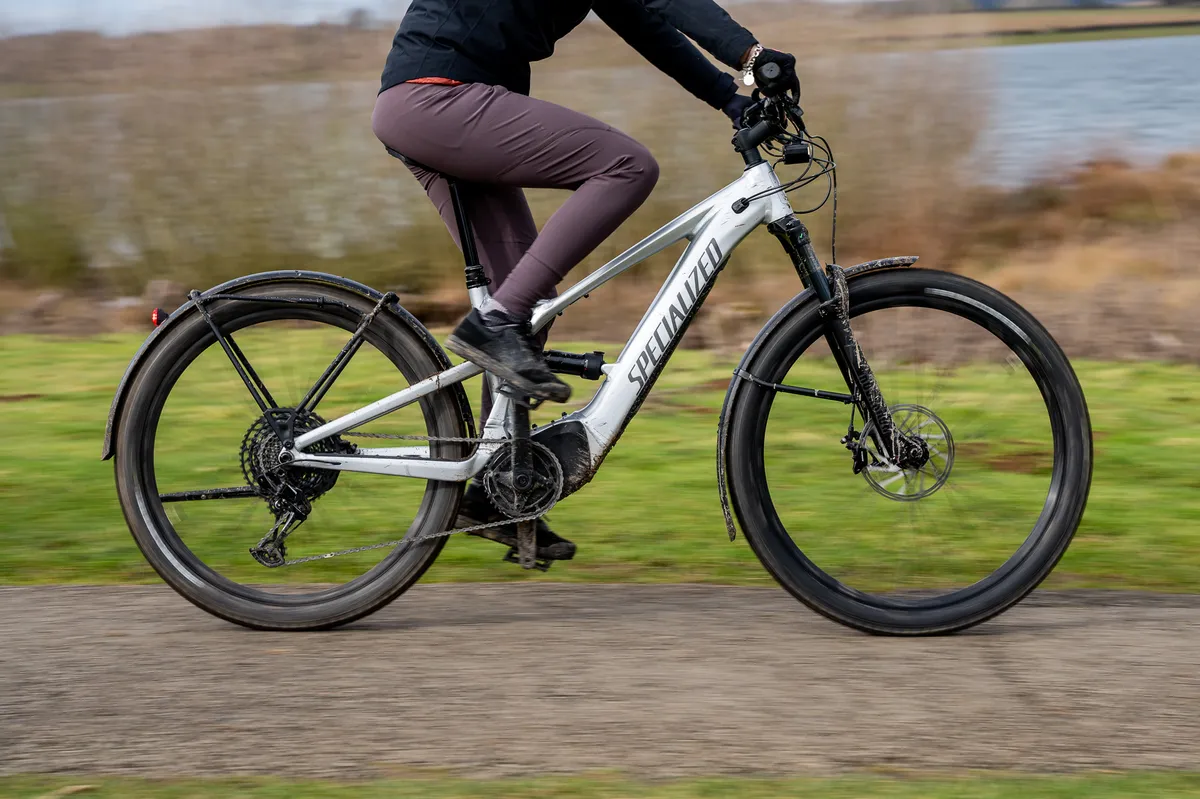
Ebikes, or electric bikes, are bicycles that either have a motor built into the frame at the bottom of the bike or on the rear wheel's hub.
They provide what’s called ‘pedal assist’, which means they’ll add to the power you put in through the pedals, so you do have to pedal to make them work.
Electric versions of road, mountain, hybrid and folding bikes are absolutely brilliant for making commutes easier and providing help on climbs. They get you riding if you have an injury or level the playing field between you and your cycling companions – they're downright fun, too.
What size women’s bicycle do I need?
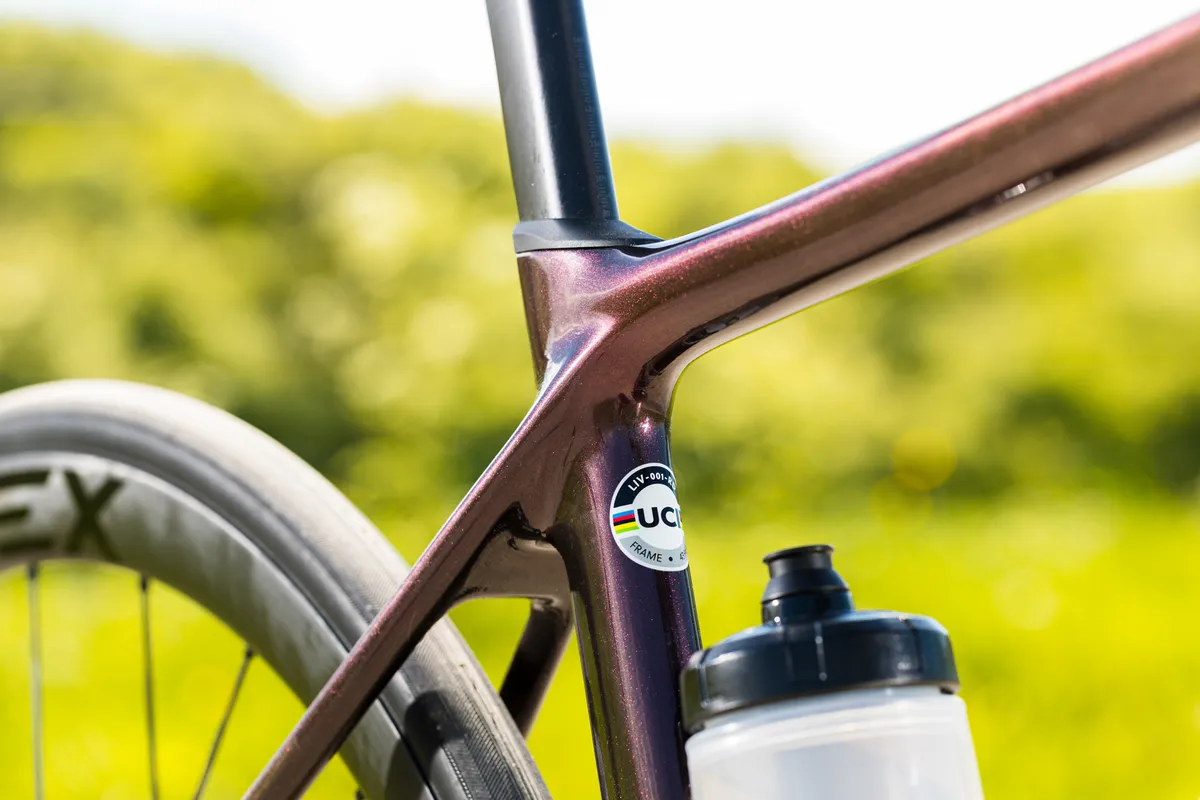
Most bikes are sized as Small, Medium, Large, etc (usually mountain bikes and some hybrid bikes), or numerically in centimetres or inches (54cm, 17in, etc).
Like clothes, sizing isn’t consistent across brands, so don’t expect one brand’s Medium to feel exactly the same as another’s.
Most brands have an online size guide that will recommend a size based on your height, or other measurements such as your inner leg length. This is where you should start.
Try to demo the bike if you can, so you can see how it feels when you ride it. This is particularly important if you sit between sizes because it will help you work out which size to go for.
For more information, we've created a simple guide to women’s bike sizes that may help.
How can I get my bike to fit better?

Once you have a bike, it’s possible to adjust the fit to make it even better, which is important if you’re going to be riding it a lot because small niggles can turn into big ones over a long bike ride.
Also, if you want to make the bike you already have fit better, or adapt a unisex bike, there are some simple changes you can make.
The six most common tweaks for a better bike fit are:
- Fitting a women's-specific saddle
- Changing the seatpost
- Swapping in a shorter stem for the handlebar
- Checking the width of your handlebars
- Changing to shorter cranks
- Adjusting the reach of your brakes
Many of these adaptations are easy to do yourself, or if you buy a bike from your local bike shop they will be able to help.
If you're going to be riding a lot – and particularly if you're going to buy a road bike – we'd recommend getting a professional bike fit. A bike fit is where an experienced bike fitter takes measurements including leg length, flexibility and how far you reach forward when seated. They will also observe as you ride the bike on a static trainer.
From this, they can adjust elements of the bike, such as saddle height, handlebar reach, etc, to give you the best fit possible.
This may require swapping out certain parts for others, such as handlebars with a deep drop to a pair with a shallower drop, or a long stem to one that's slightly shorter.
We have loads of advice on bike fit on BikeRadar, though, such as how to set your saddle height and position and how to adjust your handlebar height.
If you'd like more information, here's the lowdown on how to get your road bike position right and how to achieve the perfect mountain bike fit.
Is there a difference between women’s and men’s bikes?
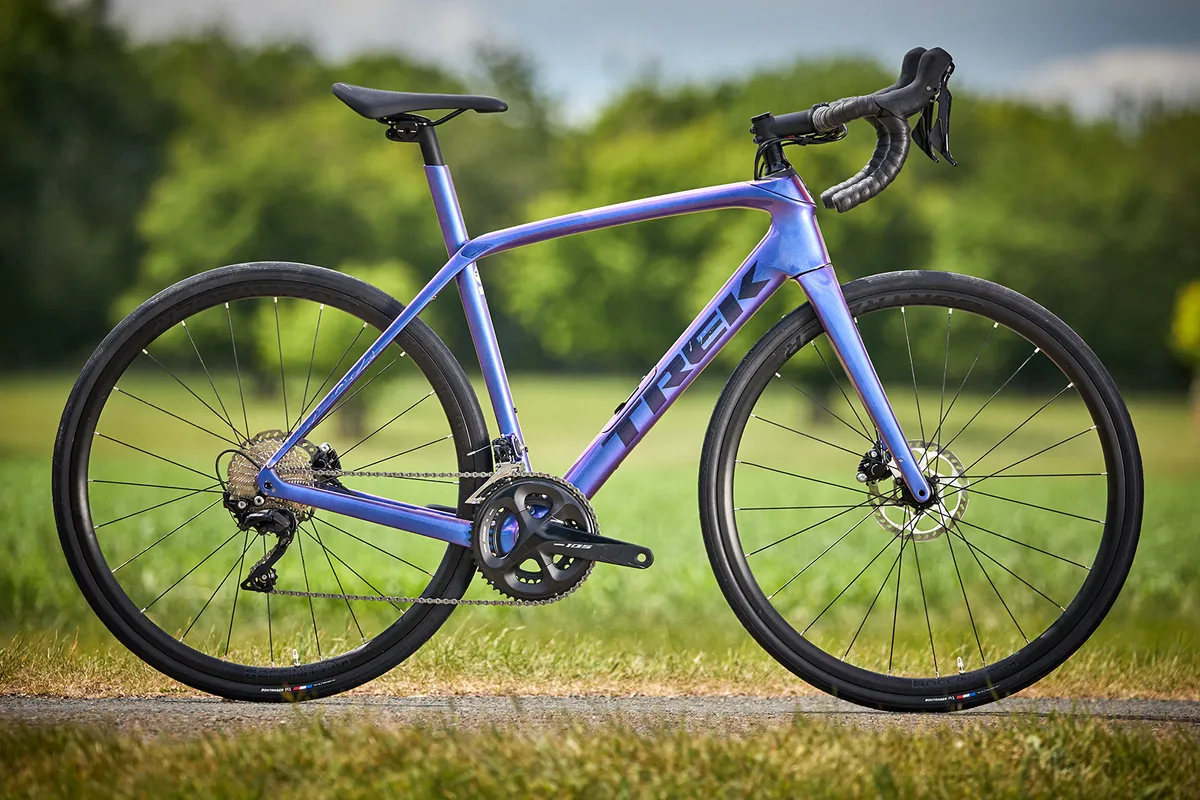
Nearly all the big bike brands make what they call ‘unisex’ bikes; bikes they say are designed for all riders.
A lot of brands also make women’s bikes, sometimes called women’s-specific bikes. Often, these are mostly the same as those brands' unisex bikes but with different contact points, such as the saddle and handlebar, which will be chosen to suit women better.
Other brands, such as Liv Cycling and Canyon Bicycles, make bikes specifically for women based only on body geometry, sizes and needs of women from research data.
The question is then do women have to ride a women’s-specific bike? The answer is no, but a lot of women do find they fit them better. It’s always worth testing out a few bikes, both unisex and women’s-specific if you can, to see which feels best for you.
Whatever approach a brand has to designing women’s bikes, there are usually a few things they have in common:
- Smaller sizes: Small, X-Small and XX-Small cater for smaller riders. Sometimes these are the small sizes of the men’s/unisex bike, other times they're a dedicated women’s frame with a unique geometry.
- Lowered top tube: this mostly applies to hybrid or commuter bikes, particularly Dutch or ‘sit up and beg’ bikes. They have a lower or sloping top tube, which means it’s easier to stand straddling the frame, making it easier to get on and off.
- Women’s saddle: women’s bikes usually come with a saddle designed to be comfortable for female riders. However, because saddles are a personal thing, you may still want to try something different. Our buyer’s guide to women’s saddles is a great place to start your search for the perfect perch.
- A shorter reach: this refers to the distance from the saddle to the handlebar. Bikes with a frame designed for female riders will sometimes have a shorter reach compared to equivalent men’s or unisex models. This sometimes means, combined with other frame elements such as a higher front end, the result is a more upright position for the rider.
- Shorter crank arms: for riders with shorter legs, shorter crank arms (the part linking the pedals to the spindle around which they move) reduce the stretch that the leg needs around the pedal stroke, which reduces strain and makes pedalling easier. Shorter cranks can also be pedalled faster.
- Narrower handlebar, shallower drops on road handlebar: narrower handlebars are designed to suit narrower shoulders, and the shallower drop on road handlebars means a shorter reach from the seat to the bar.
- Lighter shock tune: mountain bikes that feature suspension will have this set up to accommodate the on-average lighter weight of female riders.
Do I need a women's bike?
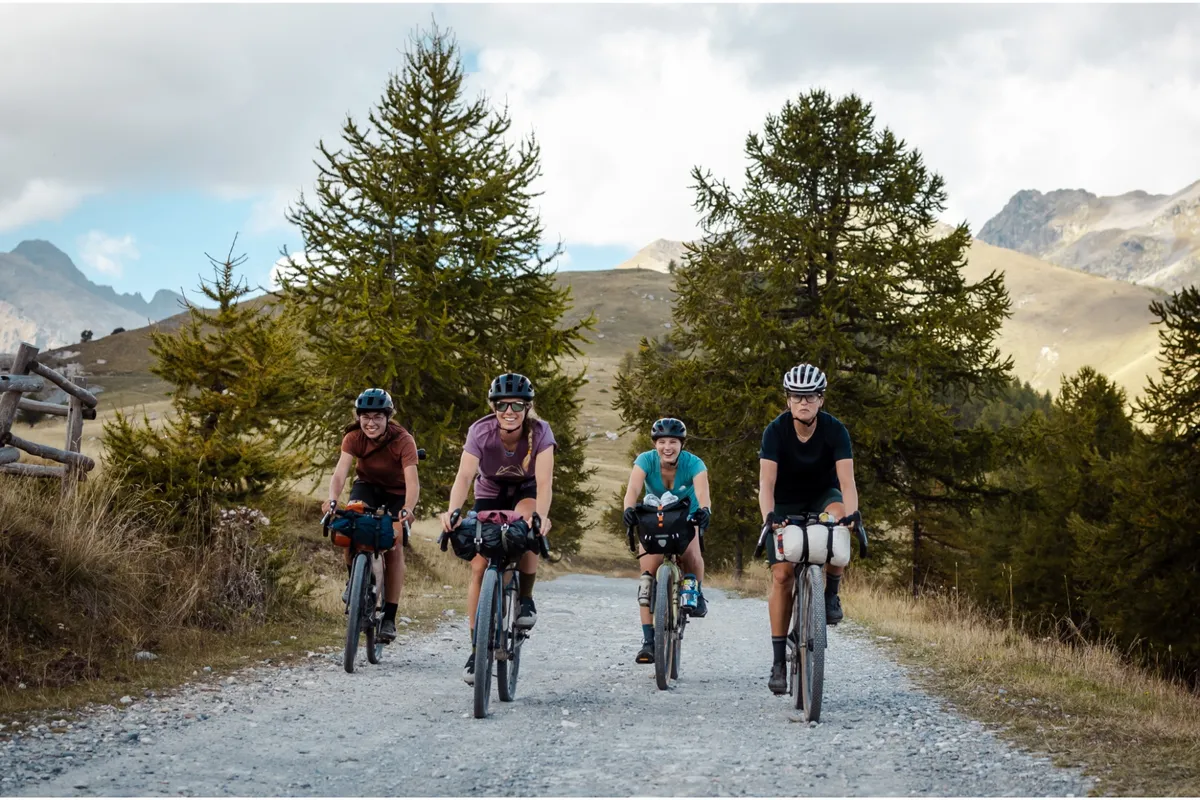
Some women have a better fit on women's-specific models, while others find no difference between women’s and unisex bikes, or prefer unisex bikes completely.
It's worth testing out a few bikes, if you can, to compare how different brands or different sizes fit because there are always slight differences in the way brands size up their bikes.
Having a bike fit will ensure your bike is right for you, whatever type you go for.
Best women’s road and gravel bikes

You can buy a road bike for as little as £200, but to get a decent-quality bike we recommend starting from about £500 if you’re planning to use it for longer distances or events.
At this price point, you see a massive jump in quality that will really make a difference to anyone doing serious riding.
You can also get excellent bargains — often in the region of a 30 to 40 per cent discount — if you don’t mind buying last year’s model, so shop around and consider waiting for the end-of-season or Black Friday sales if you’re looking for a bargain.
In general, as you go up in price you’ll get a lighter, more aerodynamic or more comfortable bike with better-quality parts that work more smoothly and/or are more robust.
If you’re willing and able to spend big, there’s nothing quite like a top-of-the-range bike, but don’t forget no matter how expensive your bike is, you’ll still be the one turning the pedals.
What to expect for your money
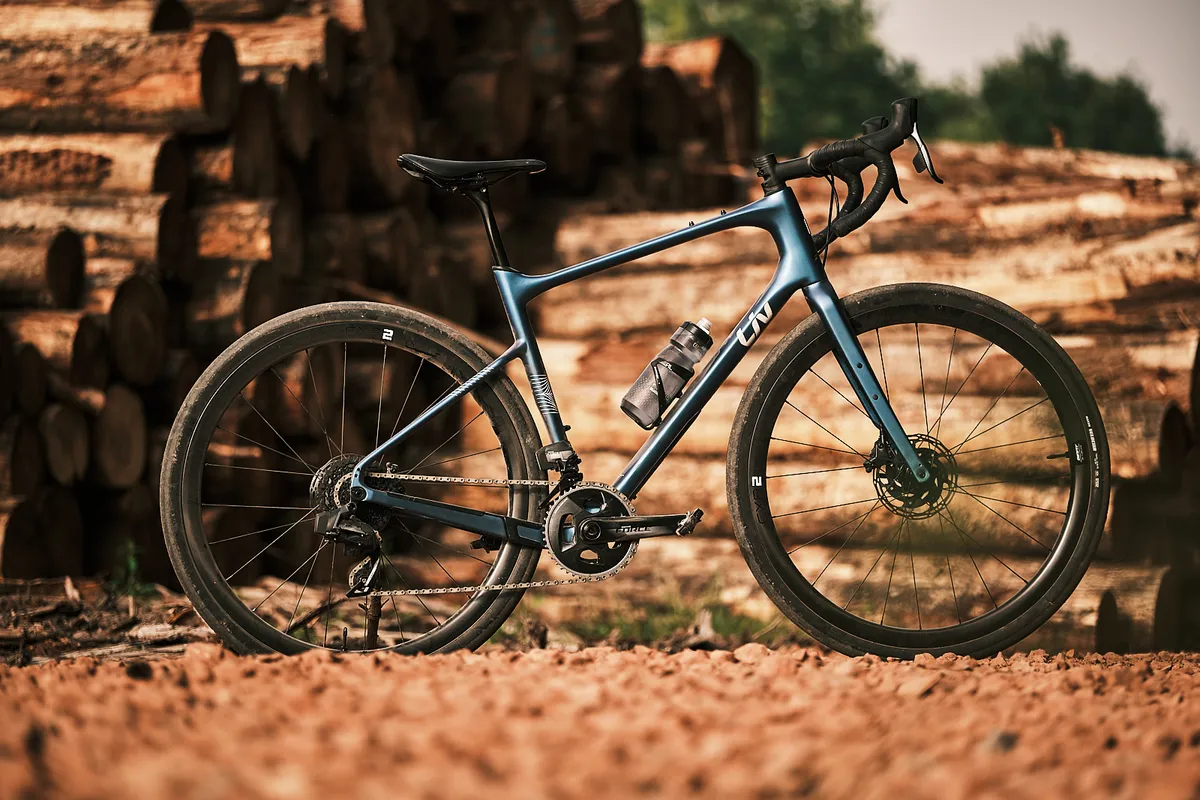
- Under £750 / $900 / €750 / AU$1,400: alloy frame and fork, which may feature carbon blades; an 8-speed double crankset (giving you 16 gears); alloy bar and stem; rim brakes or mechanical disc brakes
- Under £1,000 / $1,200 / €1,000 / AU$1,800: alloy frame with carbon or alloy forks (a full-carbon frame is rare); up to 11-speed gears with Shimano 105 (10-speed Tiagra or 9-speed Sora on cheaper models); rim or mechanical disc brakes
- Under £2,000 / $2,500 / €2,000 / AU$3,700: carbon or alloy frame; hydraulic disc brakes (allowing for wider tyres) or quality rim brakes; full Shimano 105 (GRX on gravel bikes) or SRAM Force (XPLR for gravel bikes) groupsets; better finishing kit, such as comfier saddles
- Under £3,000 / $3,700 / €3,000 / AU$5,500: carbon frames, steel and titanium possibly with carbon forks on boutique builds; mechanical and electronic versions of Shimano Ultegra or SRAM Rival groupsets; hydraulic disc brakes as standard; more internal cable routing and aero-optimisation; mid-depth carbon wheels or top-spec alloy rims; more carbon components, such as stem and handlebars
- More than £3,000 / $3,700 / AU$5,500: specs approach pro-level and become more specialised, with road bikes splitting off into aero, endurance and climbing categories; Campagnolo Ekar becomes available on gravel bikes and pricier models will incorporate gravel bike suspension
Best women’s mountain bikes
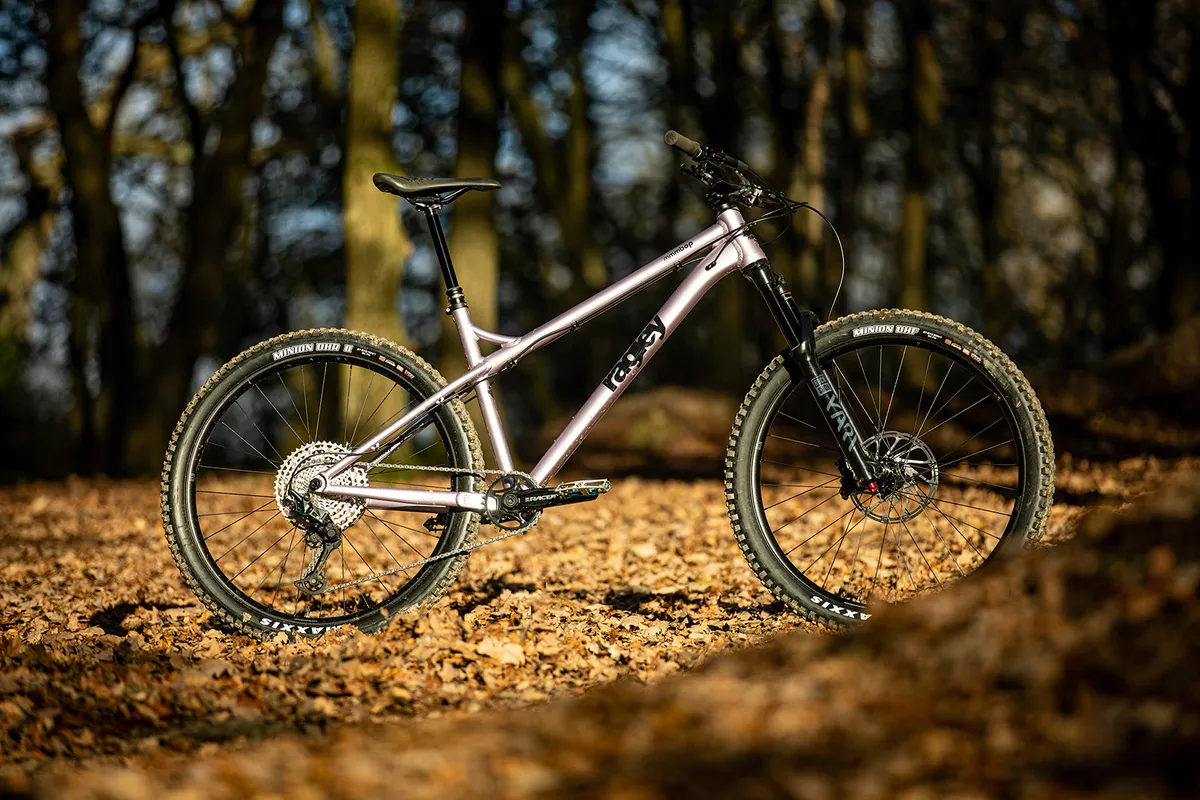
As with road bikes, you can get a mountain bike from as little as £200, but if you’re planning on riding trail centres or off-road, rather than towpaths or bridleways, we recommend spending in the region of £500 upwards and ensuring you get a bike with disc brakes for more stopping power.
While some full-suspension bikes cost less than £500, we suggest buying a hardtail at this price point. They’re simpler and more likely to include quality parts. Our guide to the best mountain bikes has more tips on how to choose the best one for you.
What to expect for your money:
- Under £500 / $600 / €600 / AU$900: alloy frame and steel-forked rigid bike (no suspension) or hardtail; mechanical disc brakes; double or triple chainset, some 1x drivetrains
- Under £750 / $900 / €850 / AU$1,400: alloy frame hardtail with around 100mm travel fork; 21 to 24 gears with a double or single-chainring crankset; hydraulic disc brakes; tubeless-ready wheels
- Under £1,000 / $1,200 / €1,100 / AU$1,800: lighter full-suspension frames; air-sprung forks with thru-axle design; 10-speed gearing with rear derailleur clutch; generally higher quality kit
- Under £2,000 / $2,500 / €2,300 / AU$3,700: carbon frame hardtail frames; better, more adjustable suspension; 1x mountain bike groupsets; dropper seatposts
- Under £3,000 / $3,700 / €3,400 / AU$5,500: carbon frames with lower spec and alloy frames with higher spec parts; greater specialisation, for example into cross-country or enduro categories; full-suspension increasingly prevalent; hardtails equipped with premium 11- or 12-speed Shimano or SRAM drivetrains; higher-volume tyres
- More than £3,000 / $3,700 / €3,400 / AU$5,500: choice of deluxe steel and titanium frames along with more common carbon and alloy; lighter, better and sturdier parts increasingly from aftermarket brands; more carbon wheels, handlebars and cranks; faster, grippier tyres
Best women’s hybrid and urban bikes
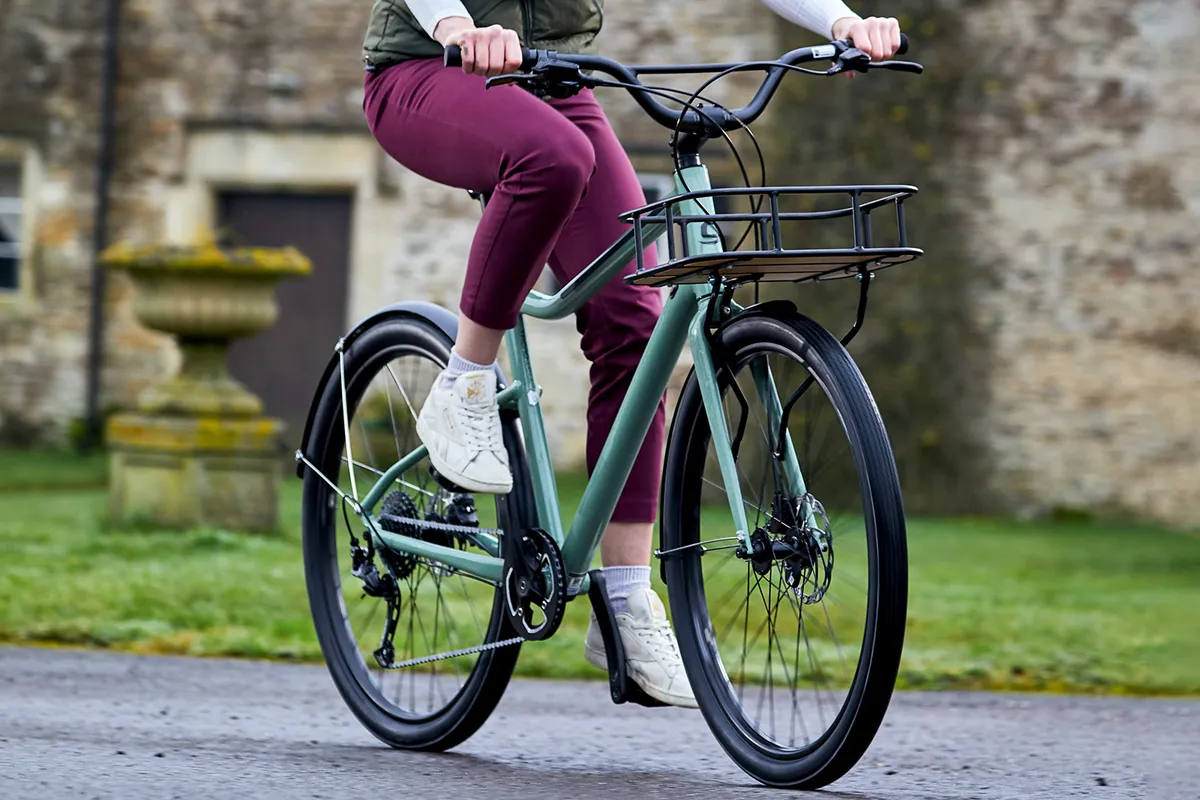
The starting price for a hybrid bike is around £150, and although you can find cheaper, you may find yourself paying in other ways, due to the likely heavy weight and lower quality of parts.
In general, as you go up in price bikes will get lighter, which is something to bear in mind if you need to carry it anywhere.
While some hybrid bikes have pannier racks and/or mudguards fitted, you may want to factor in the additional cost of these if not.
You’ll also find an array of Dutch-style upright bikes, cruiser bikes, and bikes with vintage-inspired styling, so if you want something that’s beautiful as well as functional you’ll find plenty of options, with many under £500.
Prices don’t rise uniformly across these different kinds of bikes though – for different styles, the value comes through in different ways, such as quality gears and leather finishing kit for some, and premium aluminium for others.
What to expect for your money:
- Under £300 / $370 / €340 / AU$550: heavy steel frame; V-brakes; 8-speed gearing with a single chainring
- Under £500 / $600 / €570 / AU$900: lighter steel or alloy frame; mechanical disc brakes or hydraulic higher up the price range; accessories such as rack and mudguards possibly included; single, double or triple chainring with wider gear range and mix of Shimano drivetrain components
- Under £750 / $900 / €850 / AU$1,400: alloy frame and potentially carbon fork; tubeless-ready wheels and tyres; hydraulic disc brakes, probably from Tektro; rack and mudguard mounts; lower gear ratios; clearance for up to 38mm-wide tyres
- Under £1,000 / $1,200 / €1,100 / AU$1,800: full Shimano drivetrain; hydraulic disc brakes; rack included; higher-spec equipment, such as tyres and saddle
- More than £1,000 / $1,200 / €1,100 / AU$1,800: better aesthetics and glossier paintjobs; rack and mudguards included; dynamo lights on top-of-the range bikes; pricier belt drive gearing; internal cable routing
